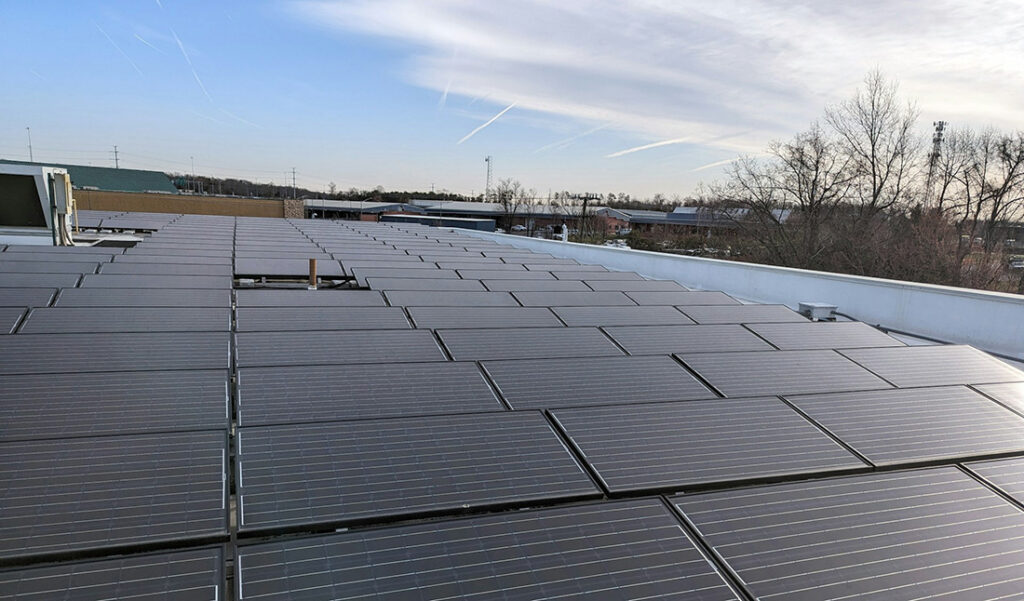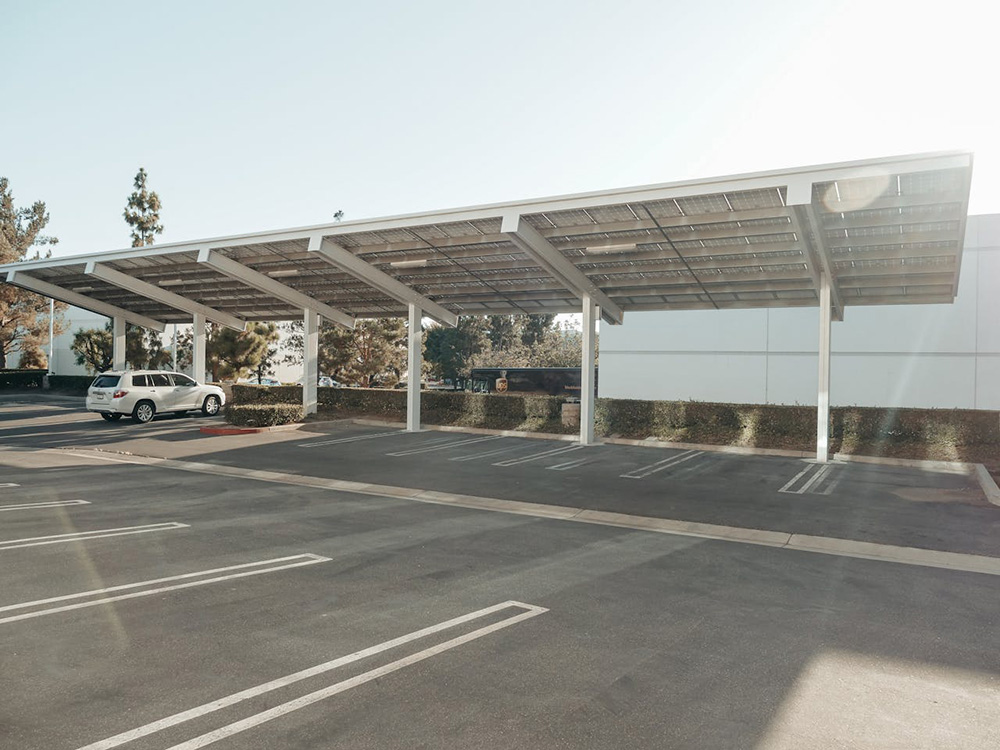Solar Tax Credits for Businesses in 2024
As the push for renewable energy continues to grow, businesses are increasingly looking to solar energy as a viable option. In 2024, several tax credits and incentives are available to help offset the costs associated with installing solar energy systems. Here we explore the key federal and state-level incentives, including the Investment Tax Credit (ITC), MACRS depreciation, state level credits, the Energy Community Tax Credit, and how businesses can maximize these benefits.
The Federal Solar Investment Tax Credit (ITC)
The cornerstone of solar incentives in the U.S. is the federal Investment Tax Credit (ITC). As of 2024, businesses that install solar energy systems can deduct 30% of the cost of installation from their federal taxes. This credit applies to both new installations and major upgrades to existing systems and is available until 2032 under the current legislation

Key Features of the ITC:
Coverage: The ITC covers 30% of the total system cost, which includes all related expenses like equipment, labor, and installation.
No Cap: There is no maximum limit on the credit amount that a business can claim. This means businesses can claim 30% of the cost regardless of the total amount spent on the solar installation.
Carryover: If the tax credit exceeds the business’s tax liability in the year the system is installed, the unused portion of the credit can be carried forward to future tax years. This carryover is typically allowed for up to 20 years, ensuring that businesses can fully utilize the credit over time.
Eligibility: The ITC is available for new and significant upgrades to existing solar installations. To qualify, the system must be installed and operational within the tax year for which the credit is claimed. The credit applies to systems used for commercial purposes, not residential use.
Step-Down Schedule: The 30% ITC is locked in through 2032, after which it is scheduled to step down gradually. However, businesses should stay informed about any legislative changes that could impact the credit amount.
Interaction with Other Incentives: The ITC can be combined with other incentives, such as MACRS depreciation and state-level tax credits, to further reduce the overall cost of solar installations. However, businesses must consider how these incentives interact to maximize their benefits.
MACRS Depreciation
In addition to the ITC, businesses can take advantage of the Modified Accelerated Cost Recovery System (MACRS) to further reduce the cost of their solar investment. MACRS allows businesses to depreciate solar energy equipment over five years, providing significant tax savings in the early years of the investment.
Under MACRS, businesses can claim depreciation deductions that reflect the system’s loss of value over time. When combined with the ITC, MACRS can reduce the overall tax liability significantly. Additionally, under the current bonus depreciation rules, businesses in 2024 can depreciate 60% of the solar project costs in the first year, further enhancing cash flow benefits. This will be dropping to 40% in 2025.
State-Level Tax Incentives for Solar Energy
State-level tax incentives play a crucial role in making solar energy systems more affordable for businesses. These incentives vary significantly by state and can include tax credits, rebates, grants, and other financial incentives that complement federal programs like the Investment Tax Credit (ITC).
Some states like California, South Carolina and New York offer robust incentive programs, others may have limited or no solar incentives. Businesses considering solar investments should research the specific incentives available in their state to understand how they can reduce costs and enhance the financial viability of solar projects.

Types of State-Level Incentives:
State Tax Credits: Many states offer their own solar tax credits, which work similarly to the federal ITC. For instance, South Carolina offers a state tax credit of 25% of the solar installation cost, which can be used over 10 years. These credits can substantially reduce the state tax liability for businesses.
Rebates: Some states provide direct rebates for solar installations. These rebates are typically based on the system size (measured in kilowatts) or the total cost and are applied either during or after the installation process. For example, New York offers a rebate through its NY-Sun program, which reduces the upfront cost of solar installations.
Grants and Financing: States may also offer grants or low-interest loans to support solar energy projects. These programs are often aimed at promoting renewable energy in specific regions or sectors. For example, California’s Self-Generation Incentive Program (SGIP) provides incentives for solar energy storage systems, which can be paired with solar panels to enhance energy efficiency.
Property and Sales Tax Exemptions: Some states exempt solar energy systems from property taxes, meaning that the added value from a solar installation does not increase property tax assessments. Additionally, certain states offer sales tax exemptions on the purchase of solar equipment, further lowering the overall cost of installation.
Net Metering: While not a direct tax incentive, net metering policies in many states allow businesses to sell excess solar energy back to the grid. The value of these credits can be applied to future energy bills, effectively reducing operational costs and improving the return on investment for solar installations.
Energy Community Tax Credit
The Energy Community Tax Credit is another significant incentive available in 2024. This credit is designed to encourage renewable energy development in communities that have been historically dependent on fossil fuels. If a business installs a solar energy system in a designated “energy community,” it may be eligible for an additional 10% tax credit on top of the federal ITC.
Identifying Energy Communities
Energy communities are typically defined as areas that have experienced significant employment losses due to the decline of fossil fuel industries or regions with high unemployment rates. Investing in these areas not only provides financial benefits through the additional tax credit but also supports economic revitalization efforts. You can find out if your business qualifies for the energy tax credit by checking here.
USDA REAP Grant for Solar Energy
The USDA Rural Energy for America Program (REAP) Grant is a valuable incentive for rural businesses and agricultural producers looking to invest in renewable energy systems, including solar. The REAP grant can cover up to 40% of the total project cost, making solar installations more affordable for eligible applicants.

Key Features of the REAP Grant:
Eligibility: The REAP grant is available to small businesses in rural areas and agricultural producers with at least 50% of their income coming from agricultural operations.
Grant Amount: The grant can cover up to 40% of the total eligible project costs for renewable energy systems or energy efficiency improvements. For solar projects, this can significantly reduce the financial burden of installation.
Loan Guarantees: In addition to grants, REAP also offers loan guarantees that can cover up to 75% of the project cost. This financing option can be paired with the grant for even greater financial support.
Application Process: The application process involves submitting a detailed project proposal, including technical reports, financial data, and environmental assessments. It’s a competitive process, and applications are reviewed based on criteria such as energy savings, environmental benefits, and the financial need of the applicant.
Stacking with Other Incentives: The REAP grant can be combined with other incentives, such as the federal Investment Tax Credit (ITC) and state-level incentives, to further reduce the net cost of a solar project. For example, a business could use the REAP grant to cover 40% of the project cost, apply the 30% federal ITC to the remaining amount, and then benefit from any applicable state tax credits or rebates.
Maximum Tax Credit Limits for Businesses
While the various tax credits offer substantial financial benefits, there are limitations on the maximum tax credits a business can claim. The federal Investment Tax Credit (ITC) itself does not have a dollar cap, meaning businesses can theoretically claim a 30% tax credit regardless of the solar installation’s size or cost. However, this credit is non-refundable, meaning it can reduce your tax liability to zero, but any excess credit cannot be refunded.
The excess credit can be carried forward to future tax years for up to 20 years, which is particularly beneficial for businesses that do not have sufficient tax liability in the installation year to fully utilize the credit. This ensures that no portion of the credit is lost, even if the business’s tax liability fluctuates over time.
On the state level, credit limits can vary significantly. For example, South Carolina’s solar tax credit has a cap of $3,500 per year or 50% of the business’s tax liability, whichever is less. Any unused state credit can be carried forward for up to 10 years.
Similarly, other states may impose limits or caps on the total amount of credit that can be claimed. It is crucial for businesses to understand both federal and state limitations to strategically plan their solar investments.
Steps to Maximize Solar Tax Credits
To ensure that your business fully capitalizes on these incentives, follow these steps:
- Assess Eligibility: Determine whether your business qualifies for all relevant tax credits, including the federal ITC, state credits, MACRS, and/or the Energy Community Credit.
- Consult with Experts: Work with tax professionals and solar consultants to optimize the financial structure of your solar investment.
- Install and Document: Ensure the solar system is installed and operational within the tax year and keep detailed records of all costs and installation dates.
- File Appropriately: Complete IRS Form 3468 to claim the ITC and work with your tax professional to accurately calculate MACRS depreciation and any other credits.
Solar Tax Credit Example
Even if your company only qualifies for the ITC tax credit and MARCS depreciation then solar is an exceptional investment. Here is a real world example of on of the smaller commercial jobs Elek has installed.
| Payback Period | 5.4 Years |
| Total Payments | $85,307 |
| Total Incentives | $49,520 |
| Net Payments | $35,786 |
| Electric Bill Savings – Term | $290,749 |
| Upfront Payment | $85,307 |
| Cap Rate (%) | 7% |
| Increase in Building Value | $89,526 |
The only two tax incentives that were available for this particular job were ITC and MARCS and the business owner still saw exceptional savings and a massive tax write off.
Business Solar Tax Summed Up
Imagine investing in a stock where you’re guaranteed the estimated return. That is what solar is in a nutshell for businesses. It make financial, environmental and logical sense anyway you put it. There are a variety of programs in place to take strain off the grid and move to renewable energy sources. These incentives will not always be in as beneficial as they are now so 2024 is a great time to consider solar for your business.


